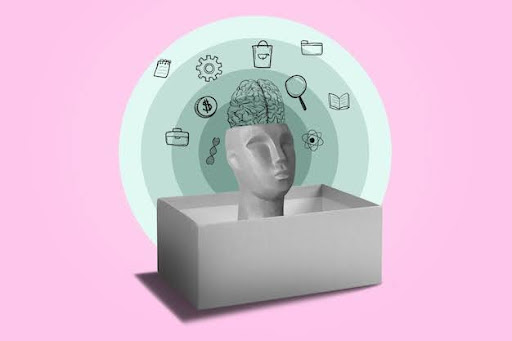In an age of clickbait and algorithmic dopamine hits, quick fixes and gut instincts hold sway. Dimpy Mahanta, an applied psychology expert, has studied how digital media shapes student behavior. She captures the problem: “As a result, formal education faces the risk of being devalued, with students gravitating toward superficial digital rewards and instant gratification rather than engaging in reflective, critical, and patient inquiry.” This shift in cognitive and behavioral patterns fosters impulsivity, reduces frustration tolerance, and undermines resilience.
The contrast is clear: we’re choosing speed over substance.
Sure, intuition offers immediate answers. But it stumbles when you’re dealing with complex behavioral challenges.
Evidence-based psychological tools work differently. They’re built on data-driven analytics, habit-architecture frameworks, and metacognitive feedback loops. These methods don’t just feel more reliable—they are more reliable. International Baccalaureate (IB) Psychology formalizes this training, giving practitioners concrete skills they can apply across real-world contexts. But here’s where most people get tripped up: they trust their instincts even when the evidence points elsewhere.
That gap between gut and guidance is exactly what we explore when instinct meets real-world complexity.
When Instincts Fail
Gut feelings fail when complexity enters the picture. Common sense tells us that sharing information changes habits. Or that motivational speeches create lasting change. These approaches sound reasonable. They feel right. But they consistently fall short when you need sustainable behavior change.
Mahanta’s research shows how digital rewards mess with student behavior patterns. It’s a perfect example of why structured, evidence-based approaches matter more than our hunches.
After all, intuition is like weather forecasting with a magic eight ball. Occasionally right, but you wouldn’t bet your house on it.
Here’s what actually works: Professor Marney White from Yale earlier this year presented evidence showing that Connecticut’s later school start times improved adolescent sleep, mental health, and academic performance. The data drove statewide policy change. This demonstrates how rigorous analysis beats intuition every time.
The lesson is clear: data-driven interventions reliably outperform gut reactions.
So once intuition’s shortcomings are laid bare, the next step is translating data into targeted action.
Precision Over Guesswork
Prevention efforts fail when they’re aimed at the wrong targets. Complex issues like mental health crises need precise intervention strategies. Data-driven design maps real-world patterns and identifies where action will have the biggest impact. The Black Dog Institute provides one example of this method. Its SAS-powered LifeSpan project charts the timing, location, and methods of suicide incidents, allowing for tailored prevention efforts that address specific needs.
Black Dog also works on media reporting across New South Wales. They use text analytics to spot stigma-reinforcing language in news coverage. Their goal? Guide journalists toward reframing strategies that change how society talks about suicide.
It’s a systematic method for shifting public perception through data analysis.
This systematic targeting represents a fundamental shift from guesswork to precision. Moving from broad, hope-based campaigns to focused, evidence-backed interventions sets up the foundation for sustainable change. But identifying the right targets is only half the battle—you also need frameworks that make new behaviors stick.
With routines coded into our environment, the question becomes how we keep tabs on progress.

Building Lasting Routines
New behaviors collapse when they depend solely on individual willpower. Motivation fades. Life gets busy. Good intentions disappear. Environmental design works better than relying on personal determination.
Habit-architecture frameworks offer three core tools: habit stacking, environmental cues, and default options. Habit stacking links new actions to established routines. Environmental cues trigger behaviors at optimal moments. Default options make desired actions the easiest choice. These sound simple, but they’re like assembling IKEA furniture—deceptively complex until you’ve done it a few times and figured out which screws actually matter.
Organizations struggle with embedding structured routines that last beyond the initial enthusiasm phase. This requires habit-architecture frameworks using environmental cues, microlearning checkpoints, and default options to sustain practice. MindTools brings this strategy to life through its M:Suite platform. The M:Suite modules integrate performance analytics, environmental cue prompts, and built-in default actions to guide users through habit stacking exercises, promoting consistent practice.
This shows how habit-architecture solutions address embedding routines in professional settings.
The key insight here? Successful behavior change needs both the right framework and ongoing feedback to track progress.
Self-Monitoring and Optimization
Metacognitive feedback loops speed up skill mastery and self-regulated growth. Self-monitoring tools are key here. Yes, tracking every metric can feel excessive at first—like weighing yourself three times a day and wondering why the numbers keep changing.
Revision Village employs this technique with a question bank of thousands of exam-style questions tagged by topic and difficulty. Each question comes with written markschemes and step-by-step video solutions you can access via web and mobile platforms. The platform serves over 350,000 IB students in 135 countries and educators in 1,500 schools, with more than half of its content freely available worldwide.
The platform’s interactive dashboards show progress trends. They highlight strengths and weaknesses while enabling targeted goal setting. Revision Village’s performance analytics foster a cycle of continuous improvement and self-regulation.
This shows how performance analytics platforms strengthen self-monitoring for continuous improvement. But they also risk overemphasizing metrics without built-in reflective practices.
But numbers alone can deceive—which brings us to the mental blind spots that skew every dashboard.
Overcoming Cognitive Bias
Spotting and reframing biases sharpens judgment and prevents costly mistakes in everyday decisions. Here’s the catch: the people most confident about recognizing bias are usually the ones most susceptible to it. It’s a bias about bias.
At an educational panel this past August focused on integrated behavioral health in substance abuse and addiction treatment, Linda White-Ryan, Ph.D., Associate Dean for Academic Affairs at Fordham University Graduate School of Social Service, stated, “Thoughts create feelings, and feelings create behavior. If you can shift that thinking, you can influence the behavior downstream.” This insight shows how mental reframing can bypass confirmation and framing biases.
Formal training provides the structured technique needed to repeatedly identify these mental traps before they derail decision-making.
Armed with skills and structures, it’s time to see how all these pieces assemble into a coherent strategy.
Scaling Impact Through Training
Rigorous education in research methods and theoretical frameworks gives practitioners the tools to adapt psychological insights across different domains. IB Psychology emphasizes experimental design, data interpretation, and cross-domain theory in cognitive, social-cultural, and biological psychology.
This training helps graduates spot bias traps. They learn to design habit architectures and deploy data-driven interventions in various settings. From community health initiatives to workplace productivity improvements. It’s about building transferable skills rather than memorizing theories.
The IB Diploma’s real-world internal assessment components work differently. These experiences prepare students to apply psychological principles effectively in real-world scenarios.
A Systematic Alternative
Evidence-based psychological frameworks offer a systematic alternative to intuition-based decision making. Data-driven targeting works alongside habit architectures, while feedback loops tie directly into formal training—together forming replicable methods for tackling everyday challenges. These strategies regularly outperform ad hoc solutions.
The choice is straightforward: ‘What feels right?’ versus ‘What does the data say?’
Mahanta warned us about choosing digital rewards over patient inquiry—but evidence-based practices offer the antidote. We’re living in an era of instant gratification and surface-level thinking. Evidence-based practices provide the precision and effectiveness needed to address complex challenges systematically.
The question isn’t if you’ll face tough calls—it’s whether you’ve put these evidence-based tools in your toolkit first.

